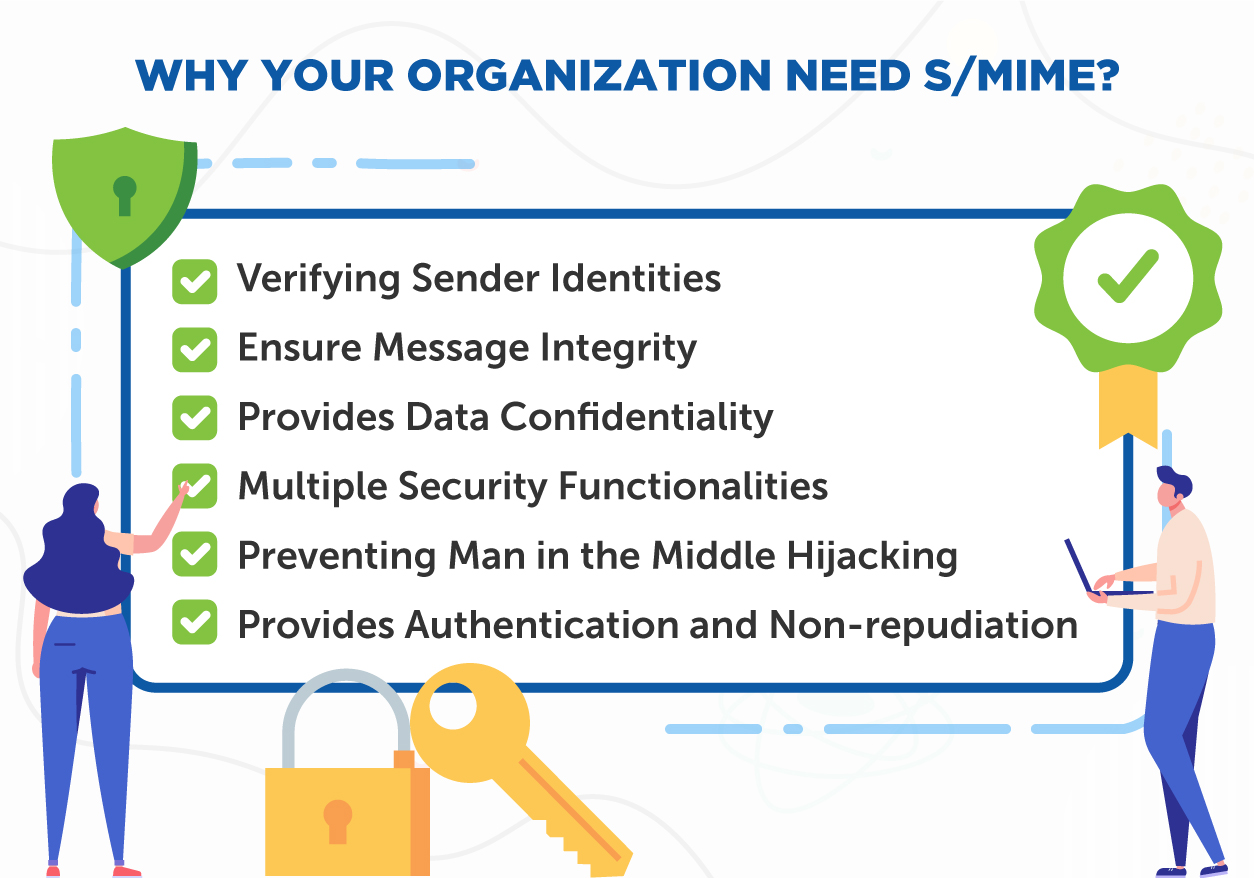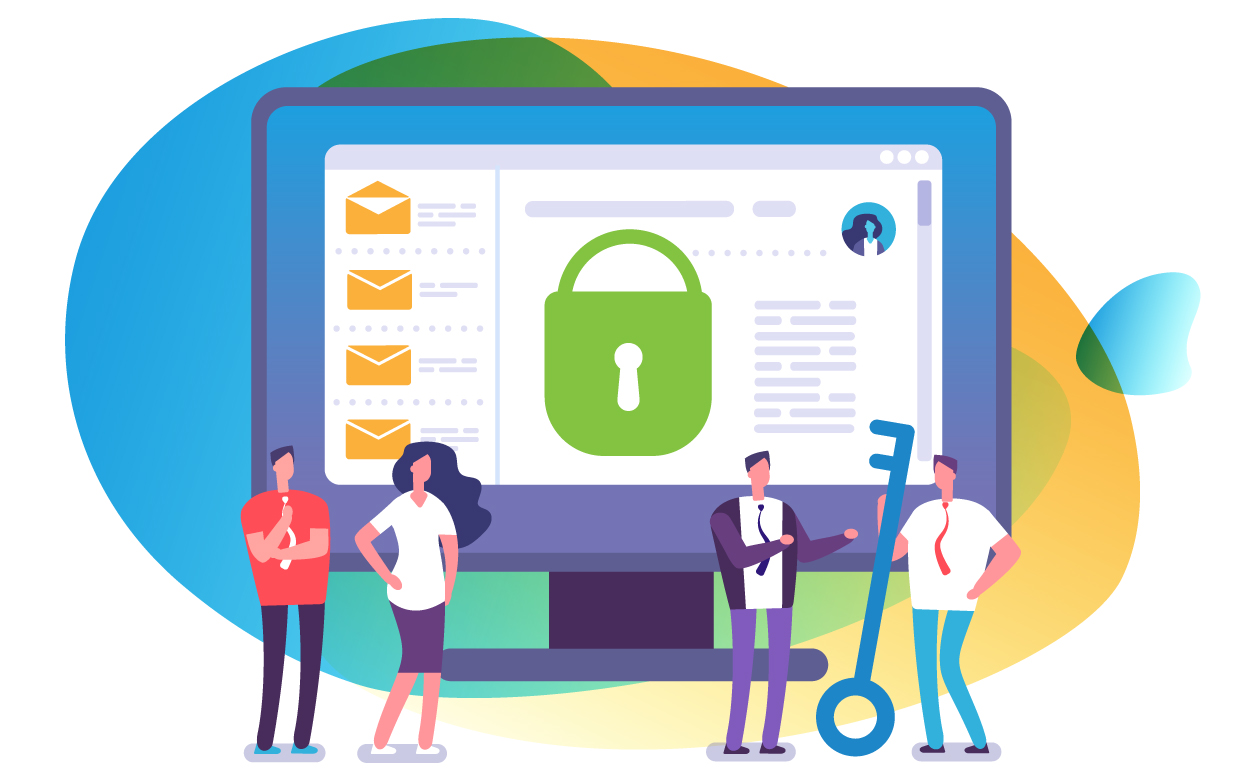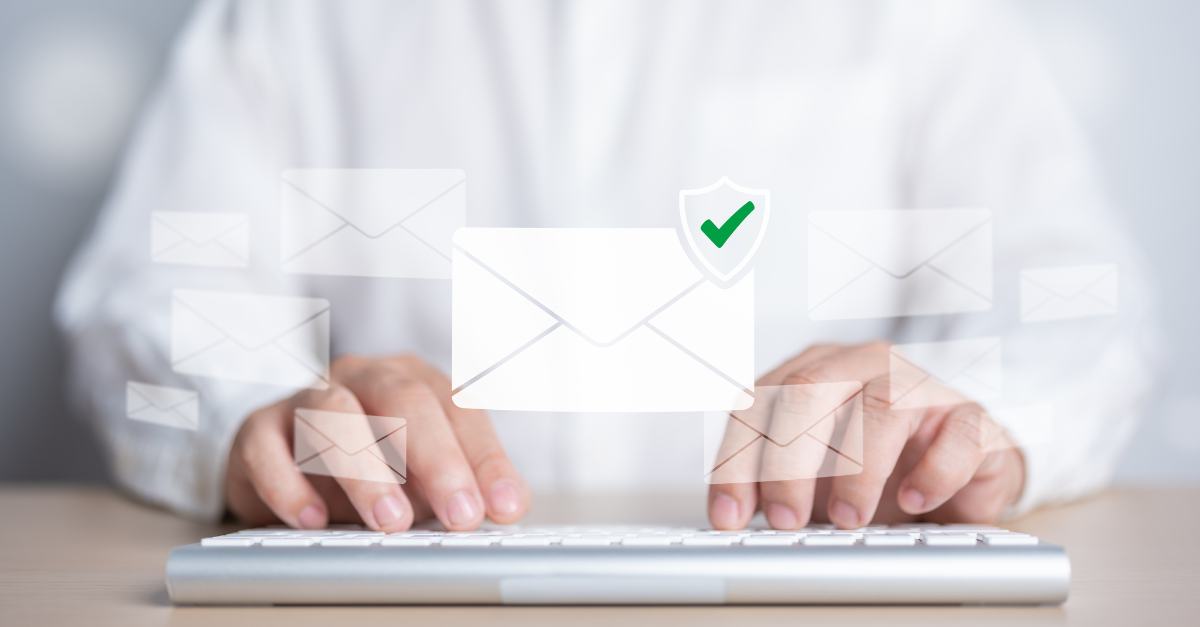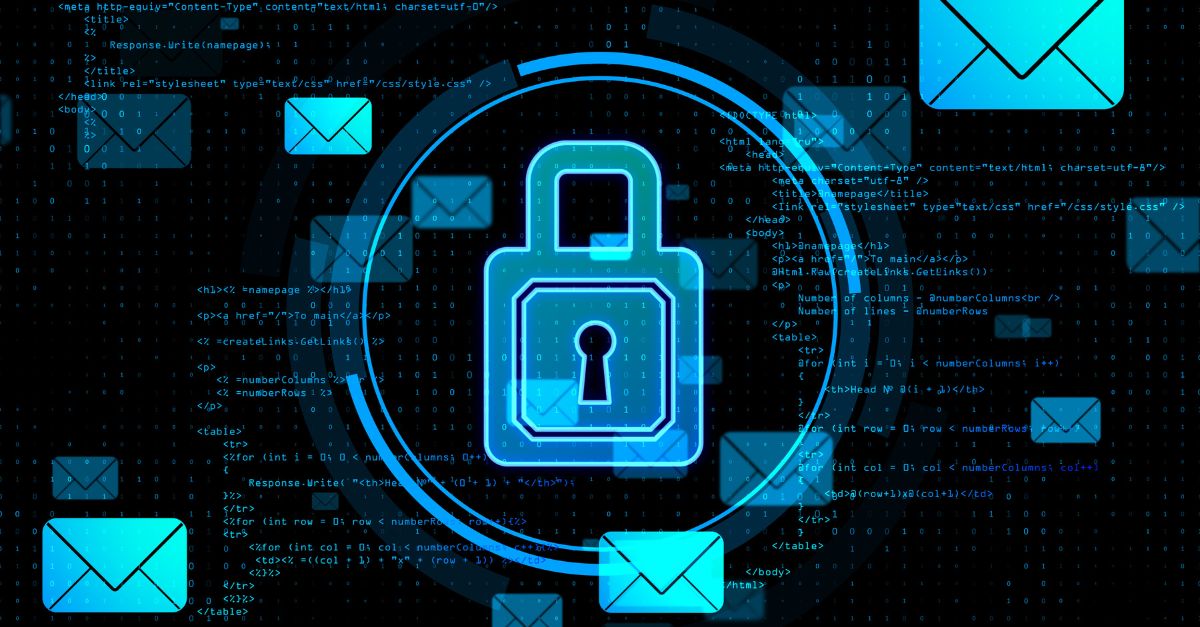Today, all types of business communications are done through emails. Employees can't sacrifice their inboxes' mobility, reliability, and economy. From contract information to the latest sales reports, existing email data must remain confidential when sending and receiving emails.
When we send an email, we need to ensure that the message we are sending arrives safely to the desired recipient's inbox and does not get hacked in between. Even when we receive an email ourselves, we always need to ensure that we receive and reply to the message from a trusted source and not to any fraud third party. That's why email encryption should be a cornerstone of your business' security plan.
What is S/MIME? How does it work?
S/MIME is an acronym for Secure/Multipurpose Internet Mail Extensions. It is a type of public encryption and signing of MIME data, also known as email messages, to verify a sender's identity. With S/MIME solutions, it is possible to send and receive encrypted emails through a secured channel. It enables email security features by providing encryption, authentication, message integrity, and other related services.
S/MIME is based on asymmetric cryptography that uses a pair of mathematically related keys to operate – a public key and a private key. It is computationally infeasible to figure out the private key based on the public key. Emails are encrypted with the recipient's public key. The email can only be decrypted with the corresponding private key, which is supposed to be in sole possession of the recipient. Unless the private key is compromised, you can be confident that only your intended recipient will be able to access the sensitive data in your emails.
An S/MIME certificate also authorizes you to digitally sign your emails using hashing; in the same way, you use e-signatures to assert your identity. The private key uses your digital signature to your email whenever you sign and send it. And when the recipients receive the email, your public key is applied to verify the digital signature. This way, it ensures the recipient that the email was sent by you, not someone else pretending to be you. Such assurance plays a crucial role not only when you're communicating outside your organization but also between co-workers.
How do you Protect and Encrypt an Email Message?
Emails messages can be secured and encrypted with S/MIME, PKI, or digital certificates. S/MIME combined with digital certificates can provide data encryption, message integrity, and non-repudiation of message origin.

Conclusion
Given the rise of phishing attacks, verifying the identity of email senders is critical to maintaining a strong security perimeter across your organization. Considering the additional security advantages, implementing S/MIME is a no-brainer. So, it’s best to be proactive and wise by safeguarding your organization from the dangers before they have a chance to strike.
GlobalSign’s S/MIME Certificates scale to accommodate businesses of all sizes, with certificate lifecycle management and automation technologies with S/MIME certificates to simplify high-volume deployments. If you have any questions about S/MIME or other cybersecurity tools, reach out to the GMO GlobalSign team now!







